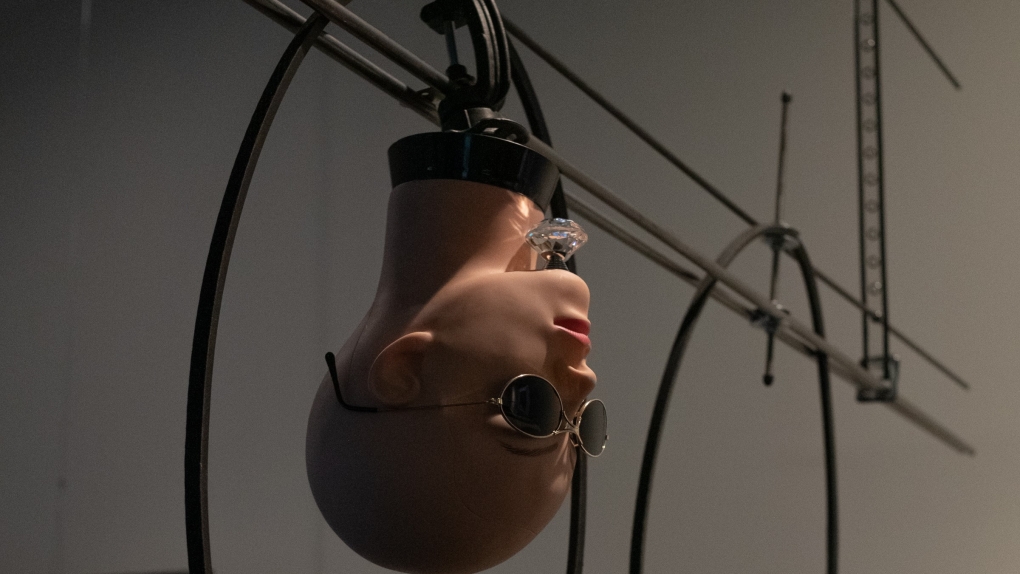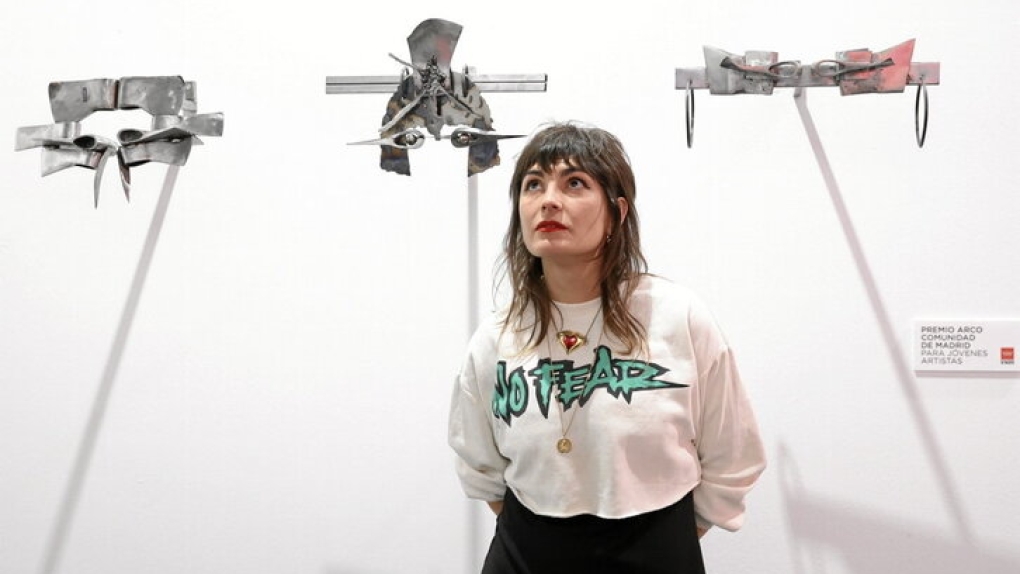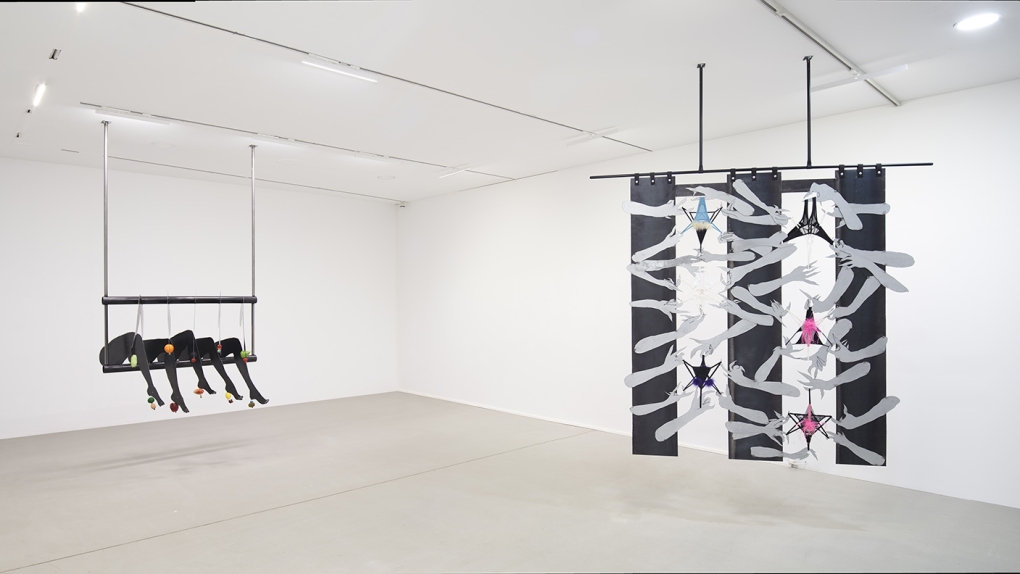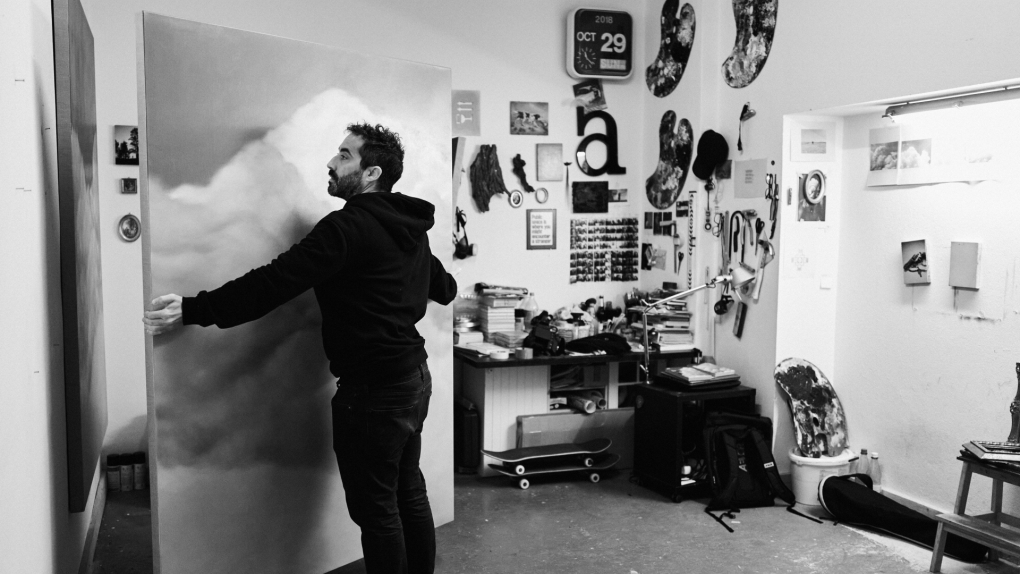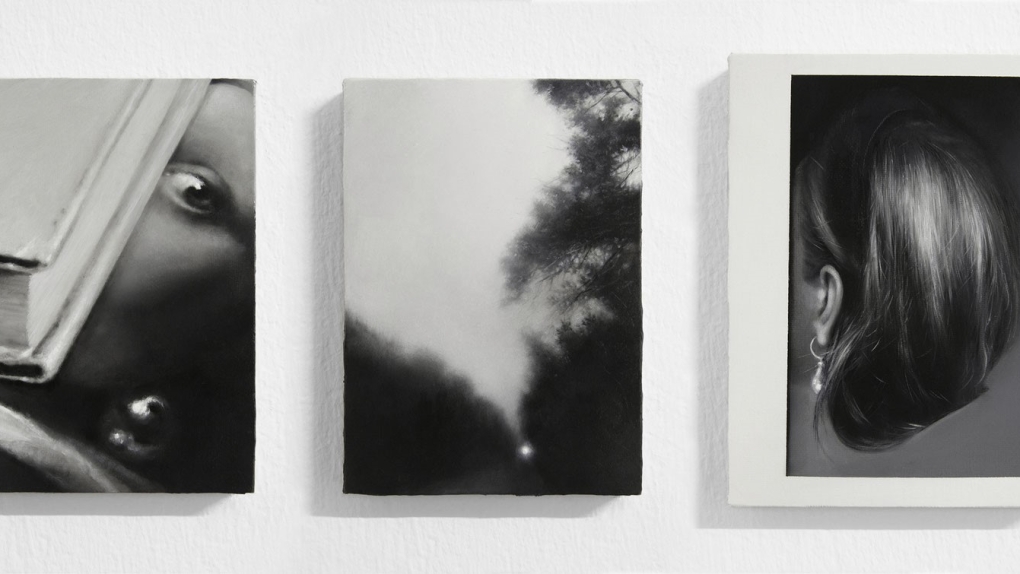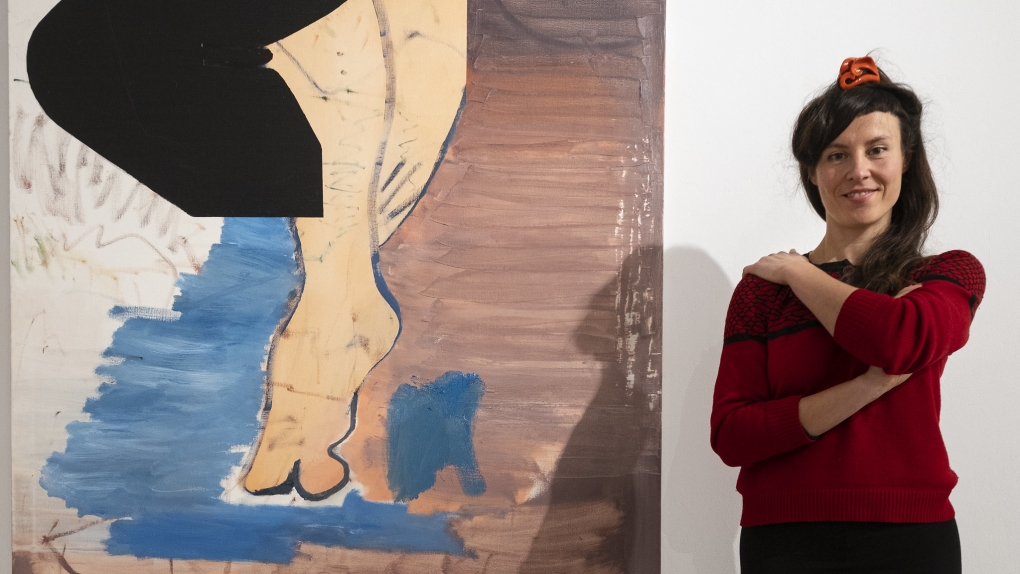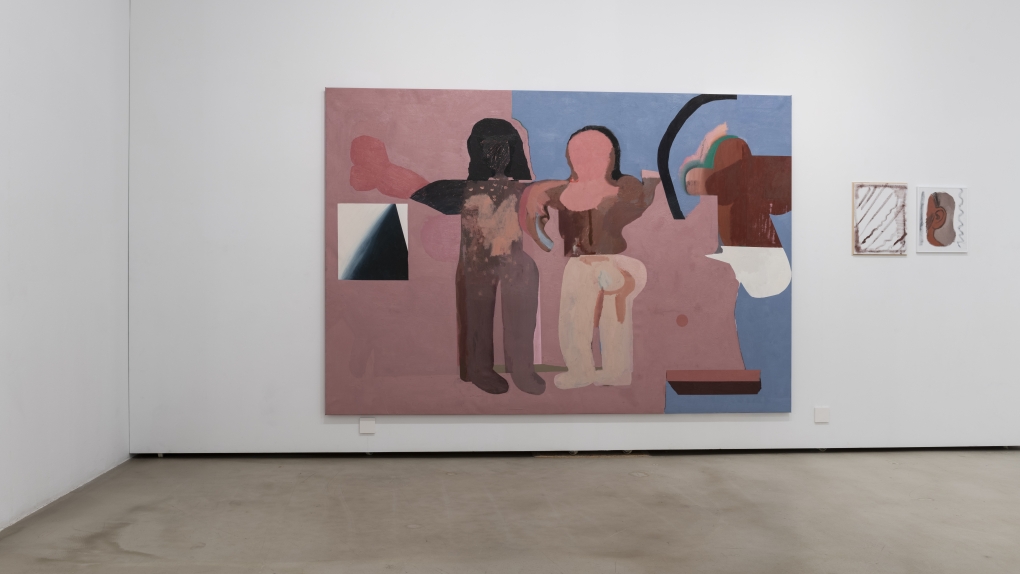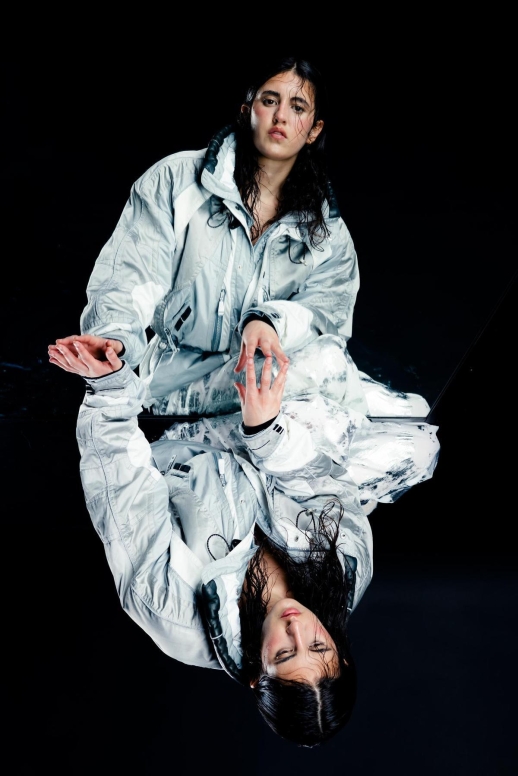A new generation of visual artists has risen to prominence in recent years. Born in the late 1970s and early 1980s and trained at the University of the Basque Country’s Faculty of Fine Arts, these artists have gained acclaim that extends beyond the country´s borders. Sculpture, painting, installation, writing, and performance are hybridised in both the artists´ careers and their works, resulting in creations that feature meticulous craftsmanship and a distinct poetic sense of artistic expression.
Five rising artists to keep your eye on
09 Apr 2025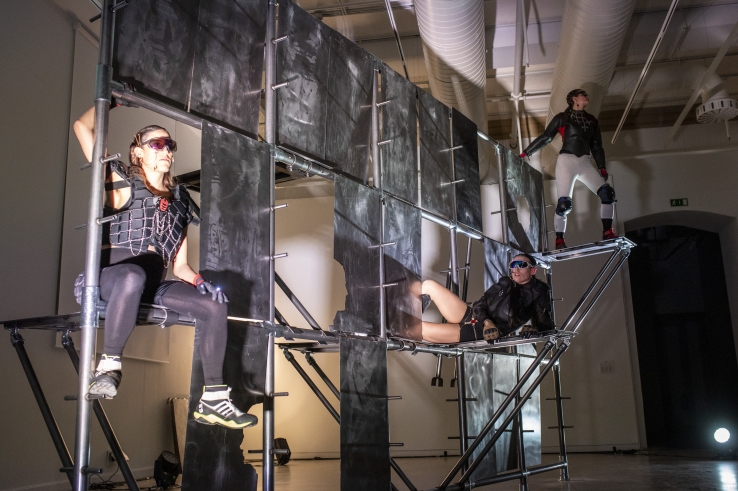
Sahatsa Jauregi
Sculpture, in its broadest sense, is the natural medium for Sahatsa Jauregi (Itaparica, Brazil, 1984), who makes inventories of pieces, images and forms from popular culture – typically associated with ornamentation – and infuses them with new meanings. The body, subjectivity, and individual and collective identities are her areas of study, concentrating on the tensions between dominant and counter-hegemonic cultures, as well as between good and bad taste. This focus enables the artist to challenge the aesthetic categories perceived by the audience.
Subject, object, and space create the backdrop for Jauregi´s assembled sculptures, which consist of individual elements that come together in perfect harmony. Positioned between tuning and the forge, these works often feature installations that evoke a sensual and erotic quality. These pieces reflect a strong interest in kitsch, resulting in a techno-aesthetic characterized by the use of metallic materials, glass, or mirrors that challenge traditional colour logic, creating an intriguing enigma regarding their materiality.
Sahatsa Jauregi has had solo exhibitions at Aparador Monteleón (Madrid), the Artium Museum of Contemporary Basque Art (Vitoria-Gasteiz), Azkuna Zentroa (Bilbao), Artiatx Espazioa (Bilbao), Halfhouse (Barcelona) and Galería Carreras Múgica (Bilbao). In recent years her work has been represented at Arco Madrid by the galleries The Ryder Projects (Madrid) and ATM (Gijón). Since 2017 she has been a partner at Okela Sormen Lantegia (Bilbao).
Alain Urrutia
Iconic fragments from art history, like landscapes, books, fabrics, and everyday objects that are rotated or cut out, create a sense of strangeness through their connections. This strangeness evokes a rich visual, literary, and conceptual intertextuality, making them more or less recognisable. It is the painting of Alain Urrutia (Bilbao, 1981) creates an identifiable universe in both monumental canvases and small paintings that references the grisaille technique as well as the black and white aesthetics of cinema and historical photography. This approach imparts a silent, timeless quality and an enigmatic character to his work.
Rather than following a defined procedure, Urrutia´s work is guided by one painting leading to another, often without knowing what the next one will be. He approaches each painting as a poem and each exhibition as a collection of poems. Fragmentation and trompe l´oeil create a network of interrupted narrative connections and various layers that invite diagonal interpretations. These works present stories without clear, unambiguous meanings, requiring the viewer to fill in the gaps.
Alain Urrutia lives and works in Berlin. His work has been featured in solo exhibitions at Galería Pelaires (Palma de Mallorca), MAAB Gallery (Milan) and the Casado Santapau Gallery (Madrid). His work has been included in various group exhibitions at institutions such as the Guggenheim Museum in Bilbao, the Joan March Foundation (Palma de Mallorca), the Patio Herreriano Museum (Valladolid), La Casa Encendida (Madrid), the CCEMx Cultural Centre (Mexico City) and the Contemporary Arts Center of Cincinnati.
Elena Aitzkoa
Elena Aitzkoa (Apodaka, Álava, 1984) came to sculpture, performance and poetry via painting, her initial artistic discipline. Her pieces are marked by the combination of diverse materials, such as fabrics, stones, and found objects, resulting from processes of reuse. Through actions like folding, unfolding, tying, surrounding, wrapping, drilling, tearing, and refolding, she creates works that convey a unique bodily presence and physicality, which are intimate and have a domestic quality.
Her latest creations, both balanced and compact in their diversity, are notable for the delicacy and tactile quality of the various materials used. Their textures and colours shape their configuration and evoke a rich sensory experience, sometimes extending into the surrounding space with a tree-like structure that spreads its branches outward. Large pale blue, green and pink fabrics solidify to trap, to embrace, in a cluster of heterogeneous knots, hard and soft materials and the most varied daydreams.
Elena Aitzkoa has had individual exhibitions at Azkuna Zentroa (Bilbao), La Panera (Lleida) and Galería Carreras Múgica (Bilbao). For several years her work has featured in the ARCO Art Fair in Madrid through the Rosa Santos Gallery (Valencia). Her artwork is also on display at the Bilbao Fine Arts Museum and the Artium Museum of Contemporary Art in Vitoria-Gasteiz, among others.
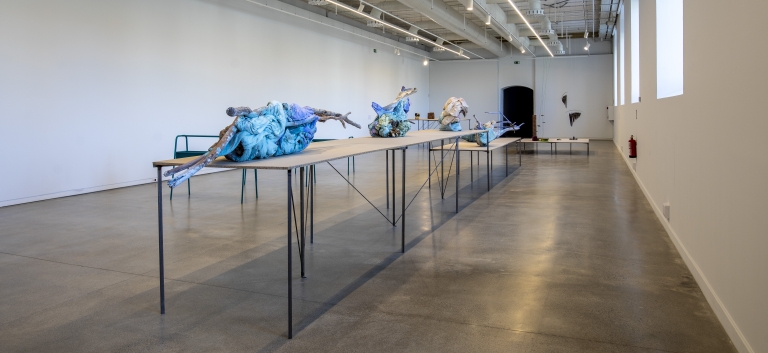
Josu Bilbao
Josu Bilbao (Bermeo, Bizkaia, 1978) reflects on and experiments with the material practice and performativity of speech and orality. Influenced by the body and its communication mechanisms, the words, phrases, and unique forms of his mother tongue – dialectal Basque from his family home – are infused with personal experience, affection, and poetry. As soon as they escape the norms of public language, they enable the artist to create a materialisation of that invisible and subtle sensitivity that makes us human.
Emerging from meticulous observation, the space and time of specific locations and their signs are key elements of his sculptural interventions. In these works, language and form – at their most fragile state – become essential components of the fundamental structures. In the transition between thought and speech, and matter and space, these places transform from one state to another.
Josu Bilbao has exhibited at and collaborated with institutions such as Halfhouse (Barcelona), Bulegoa z/b (Bilbao), Centro Botín (Santander), Museo Nacional Centro de Arte Reina Sofía (Madrid), Bilbao Fine Arts Museum, and CentroCentro (Madrid). His last solo show was held in 2025 at the Artium Museum of Contemporary Basque Art in Vitoria-Gasteiz.


Damaris Pan
The point of departure for Damaris Pan´s work (from Mallabia, Bizkaia, 1983) often stems from a mundane everyday event, and she explores it through the medium of painting. A shape or simple stroke is the starting point for connections and reconfigurations, combining and superimposing layers and objects to create forms that interrelate in space, eventually achieving the unexpected pictorial event. The colour, particularly the tension in the harmonious relationship between different colours and the pronounced materiality of the painted surfaces – resulting from the layer-by-layer construction of each piece – imparts a distinctive materiality to the paintings.
The coexistence of geometric, logical, and orderly configurations with more organic and grotesque forms offsets the coldness and uniformity of the structured composition, enabling the artist to explore the realms of playfulness and the absurd. She employs fragmented and humorous narrative scenes, occasionally with a satirical edge, to explore the essence of painting. Through the interplay and tension of these key elements, the artist creates a suggestive poetics that captivates with its apparent simplicity and hidden complexity, revealing layers upon initial observation and a more detailed examination.
The work of Damaris Pan has been featured in individual exhibitions at Museo Patio Herreriano (Valladolid), Halfhouse (Barcelona), Fundación BilbaoArte (Bilbao) and Sala Rekalde (Bilbao). In 2024 she was the winner of the BMW Painting Prize. In recent years, her work has been shown at Arco Madrid by the galleries Ana Mas Projects (Barcelona) and Fermay (Palma de Mallorca). Since 2015, she has taught painting at the Faculty of Fine Arts at the University of the Basque Country.
